The Winner of the First EUROPARC-ENOS Joint Award: British Mountaineering Council and Peak District National Park recognised for peatland restoration
EUROPARC and ENOS Joint Award Winner
The EUROPARC Federation and the European Network of Outdoor Sports (ENOS) are delighted to announce the winner of the Joint Award for Outdoor Sports and Nature Conservation: The Climate Project: Sphagnum Planting, a collaborative initiative between the British Mountaineering Council (BMC) and the Peak District National Park, delivered by Moors for the Future Partnership.
This project demonstrated how experienced Outdoor Sports enthusiasts-climbers, hill walkers and mountaineers-can actively contribute to nature conservation, applying their love for the land in deeply practical ways. Their work on peatland restoration across the Peak District and South Pennines has not only benefited the environment but also set new standards in Outdoor Sports engagement with conservation.
Restoring Life to the Moorlands
Set against the iconic landscape of The Roaches in Staffordshire, the initiative focused on restoring 27 hectares of degraded peat moorland, with 4.9 hectares planted directly by BMC volunteers using innovative methods. This included planting sphagnum moss – a vital bog-building plant – into carefully created microhabitats using nothing more than walking boots to make shoe-sized “scrapes” in challenging terrain.
Working through the winter of 2023/24 in post-wildfire conditions, volunteers showed remarkable resilience and dedication. Their efforts helped stabilise and rewet peatlands that had been severely impacted by the devastating 2018 fire, which released an estimated 11,000 tonnes of CO₂ into the atmosphere.
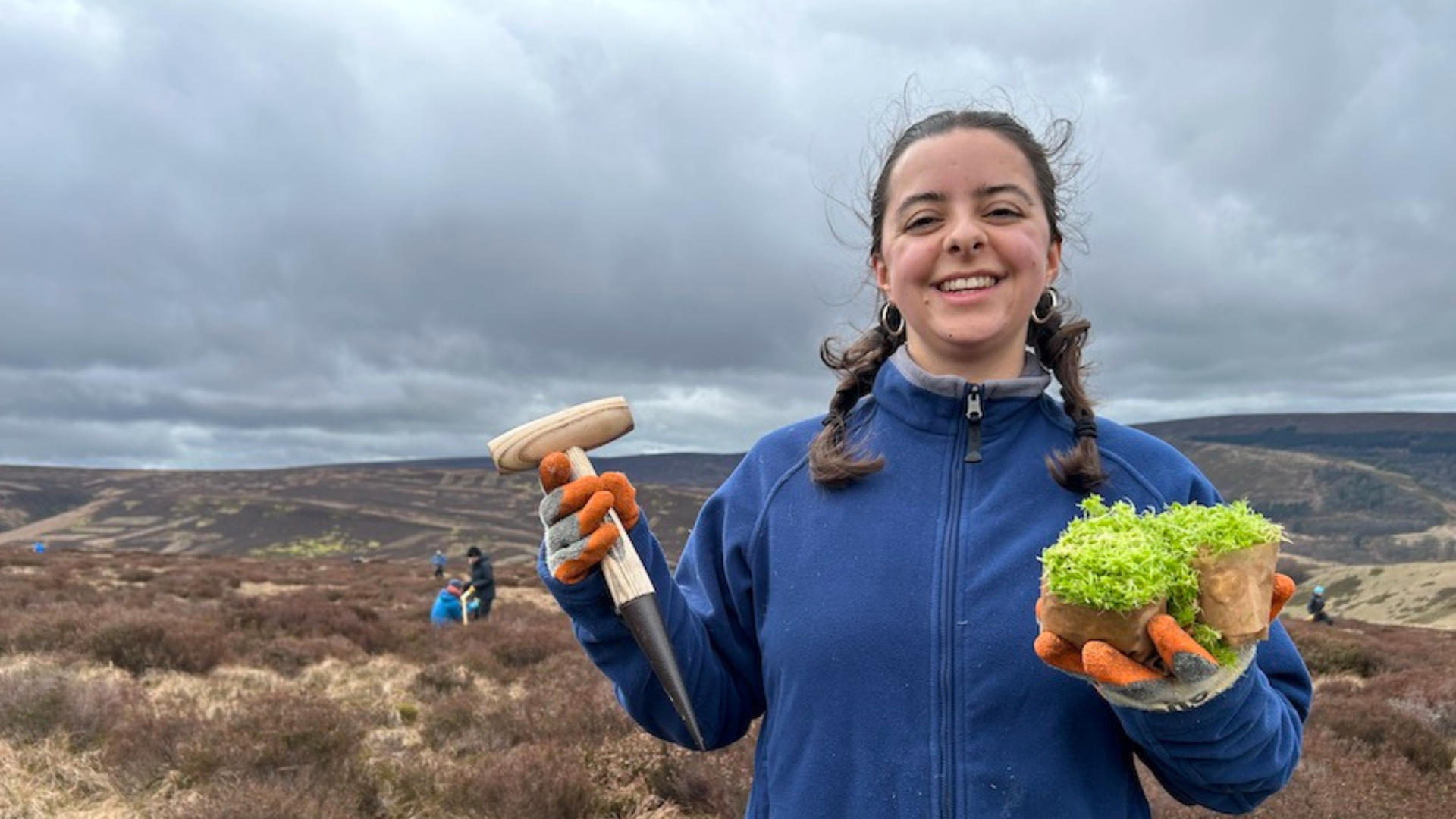
Impact and Innovation
This innovative, volunteer-led planting method proved highly effective. Scientific monitoring found that 100% of the sphagnum plugs survived, significantly outperforming traditional planting techniques. Growth rates were also far higher – 4.5 times the planted size-demonstrating the value of this people-powered approach.
The environmental benefits are manifold: improved water quality, reduced flood and wildfire risk, increased biodiversity, and long-term carbon sequestration. Socially, the project has deepened public understanding of the importance of peatlands and fostered a sense of custodianship among the Outdoor Sports community.

Collaboration at its Best
This success was only possible through the strong collaboration between nature conservation experts and Outdoor Sports stakeholders. The BMC’s Access & Conservation Trust provided £90,000 in funding, which was instrumental in unlocking a further £2.5 million through the Nature for Climate Peatland Grant Scheme. Meanwhile, Natural England and the Moors for the Future Partnership provided vital guidance, training, and scientific oversight.
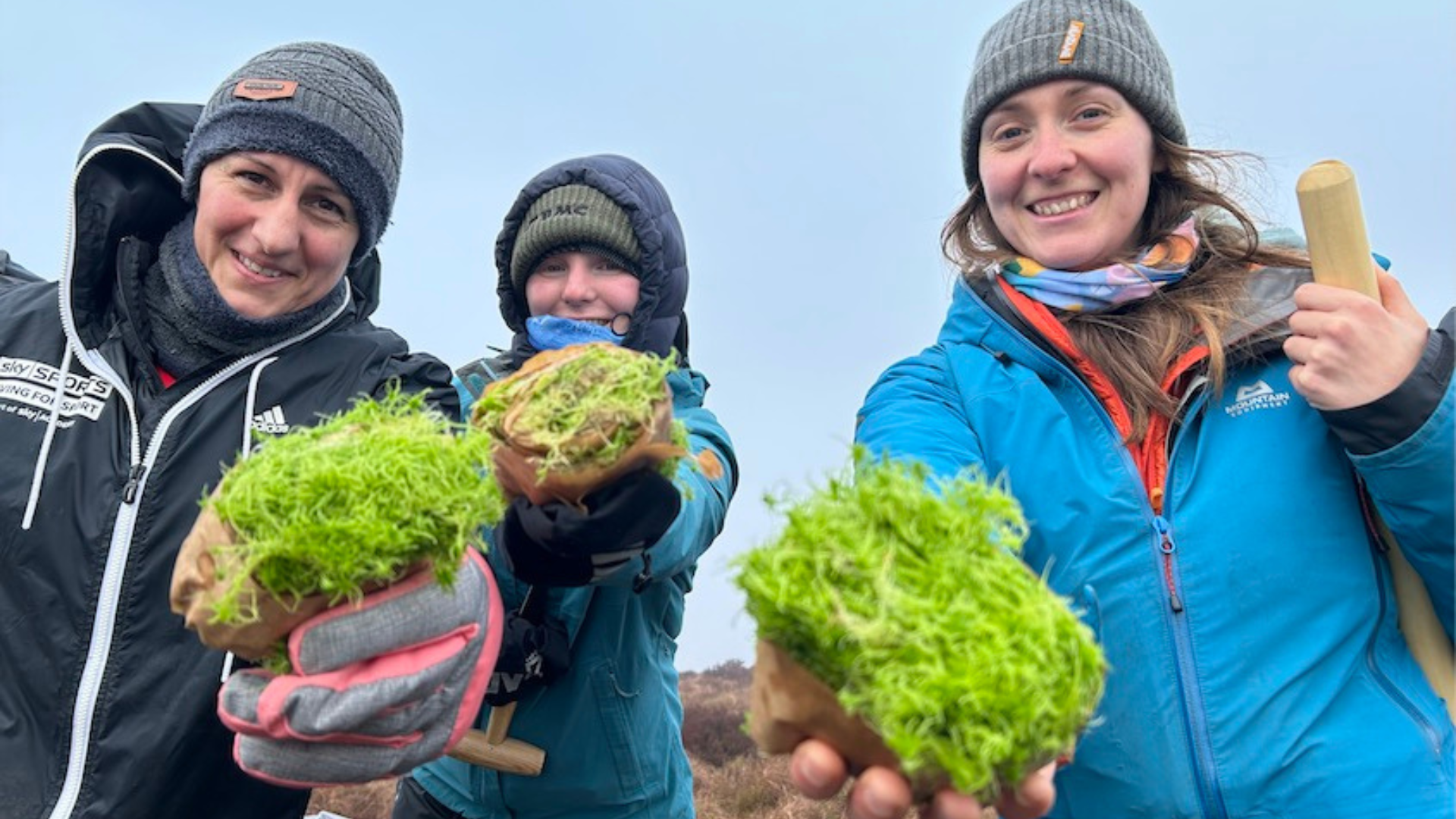
A Model for the Future
As a result of the initiative’s success, the BMC has become a member of the UN Sport for Nature Framework and is already inspiring similar action across the international Outdoor Sports community. This project now serves as an exemplar of how sport can support nature-based climate solutions.
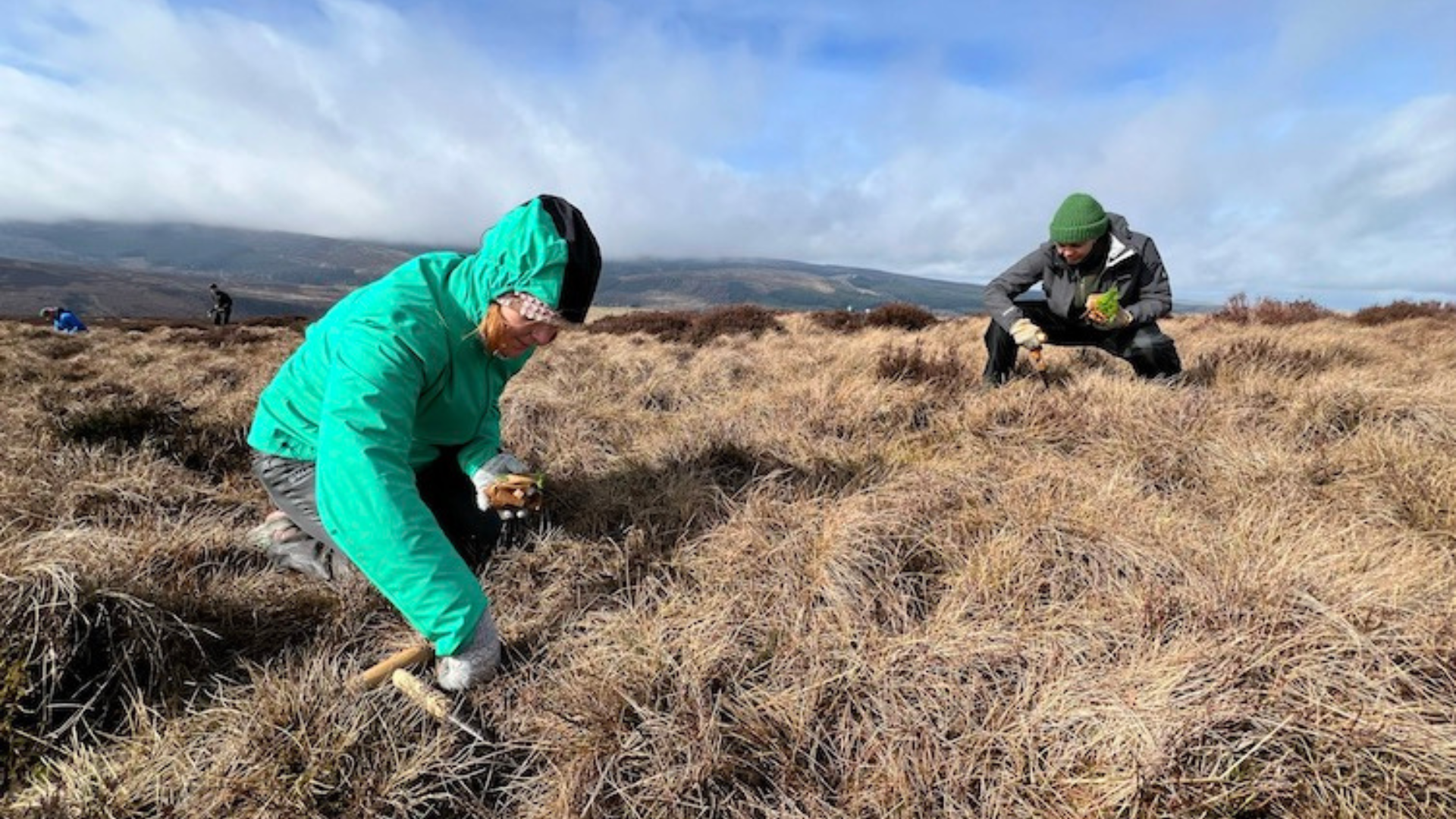
What’s Next?
As winners of the Joint Award, representatives from the BMC and Peak District National Park are invited to attend the upcoming EUROPARC Conference, where they will be formally recognised.
In addition, they are invited to present their work during a special Webinar on 29 October 2025. Mark your calendars and join our events to get an opportunity to learn more!
Learn more about the project!Congratulations to the British Mountaineering Council and Peak District National Park for leading the way in demonstrating how sport and nature can thrive together. Your efforts are a powerful reminder that conservation isn’t just about preserving landscapes-it’s about active participation, community, and a shared future.
Would you like to become a member? Learn more here:
Become EUROPARC Member Become ENOS MemberThe Burren and Cliffs of Moher UNESCO Global Geopark Joins EUROPARC Federation
(c) Burren and Clifs of Moher UNESCO Global Geopark
There is power in numbers! We are proud to introduce the newest EUROPARC member: The Burren and Cliffs of Moher UNESCO Global Geopark. Get to know the Park!
A new member from Ireland!
We are thrilled to welcome The Burren and Cliffs of Moher UNESCO Global Geopark as a new member of the EUROPARC Federation! Located in County Clare on Ireland’s wild Atlantic coast, this breathtaking region is world-renowned for its karst landscape, rich biodiversity, and deep cultural heritage.
The Geopark encompasses a variety of stunning natural features, including limestone pavements, underground cave systems, and the iconic Cliffs of Moher. It is home to rare plant and animal species, historic monuments, and a vibrant local community dedicated to sustainability.
A Clear Goal: Reducing Tourism’s Impact
The primary mission of the Geopark is to reduce the environmental and cultural impact of tourism, both within and beyond the Geopark boundaries. To achieve this, they have developed the Geopark Code of Practice for Sustainable Tourism Businesses, an online platform currently used by 69 local businesses.
This tool helps businesses track a range of sustainability metrics such as:
- Carbon footprint
- Energy usage
- Waste management
- Biodiversity actions
- Staff education
- Community cleanup initiatives
All submissions are externally audited by qualified experts, and participation in the Code is mandatory for membership in the Burren Ecotourism Network.
The Burren and Cliffs of Moher UNESCO Global Geopark are currently in the process of applying for the European Charter for Sustainable Tourism (ECST). We look forward to welcoming them and all their experience in the EUROPARC Sustainable Tourism network!
Learn more about the ECST here.
Education at the Heart of Conservation
The Burren and Cliffs of Moher Geopark strongly believes that education is essential to protecting natural, geological, and cultural heritage.
Key educational initiatives include:
- The publication of “Stone, Water and Ice,” an illustrated book explaining the geology, archaeology, and biology of Geopark sites.
- Outdoor educational signage placed throughout the Geopark to engage visitors on-site.
- The Geopark Academy, an annual conference bringing together researchers, community members, and stakeholders to share new insights and foster local engagement.
Interview Spotlight: What EUROPARC Membership Means
We spoke with Carol Gleeson, the Manager of the Tourism Department at the Geopark, to learn more about their vision and how joining EUROPARC supports their goals.
What does this new membership mean for the Burren and Cliffs of Moher Geopark?
Joining the EUROPARC Federation strengthens our commitment to sustainable tourism. The European Charter for Sustainable Tourism (ECST) gives us a globally recognized framework to deepen partnerships with national agencies like the National Parks and Wildlife Service (NPWS) and to further empower local communities and businesses in conservation-focused development.
Balancing Tourism and Nature
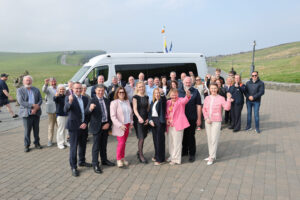
(c) Burren and Cliffs of Moher UNESCO Global Geopark
The Burren receives large numbers of visitors each year. Balancing that popularity with protection efforts is no small task.
“We take a dual approach: a regional destination management plan and our sustainable business code. Our action plan addresses infrastructure, mobility, business sustainability, climate action, and heritage protection, guided by measured indicators. This has helped County Clare become the first GSTC-Certified Tourism Destination in Ireland and the UK (certified April 2025).”
🔗 Learn more here.
🔗 Sustainable Tourism Code.
Community-Driven Innovation: Shuttle Bus Service
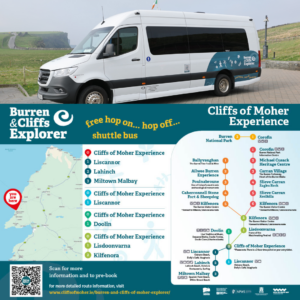
One of the Geopark’s most exciting recent projects is the Burren & Cliffs Explorer Shuttle Service. This free hop-on, hop-off bus connects the Cliffs of Moher Visitor Centre and Burren National Park with local towns.
“This service reduces car traffic in protected areas and boosts local economies. It’s a joint effort by Clare County Council and the NPWS to provide a more sustainable visitor experience.”
🚍 Featured stops:
- Miltown Malbay
- Liscannor
- Doolin
- Kilfenora
- Lisdoonvarna
- Corofin
- Ballyvaughan
🔗 Details: cliffsofmoher.ie/burren-and-cliffs-of-moher-explorer
A Decade of Impact: Achievements in Conservation and Research
Over the past decade, the Geopark has gained international recognition for sustainable tourism management and geological research.
- Established in 2008, the Burren Ecotourism Network now includes 65 businesses and has won multiple international awards.
- Their Code of Practice, introduced in 2019, is a unique, evidence-based model fully managed by the Geopark and Clare County Council.
- Academic partnerships have led to notable fossil discoveries, including a shark tooth fossil find featured by RTÉ Science.
🔗 Read more - Over 500 local residents have participated in their evening geology courses.
- The Geopark Academy brings research to life for the public and strengthens ties between academia and community.
Welcome to the EUROPARC Family!
We are proud to count the Burren and Cliffs of Moher UNESCO Global Geopark among our members. Their innovative, community-led approach to conservation and tourism is a model for Protected Areas across Europe.
Together, we move forward in our shared mission to protect nature while building resilient, sustainable communities.
Member Consultation on the EUROPARC Strategy
Julian Alps Parks Await EUROPARC Transboundary Re-Certification After Five Years of Progress
(c) Julian Alps TBA
Following Nature Design
A New Chapter for the Julian Alps Ecoregion
In 2025, the Julian Alps Transboundary Ecoregion—made up of Triglav National Park (Slovenia) and Prealpi Giulie Nature Park (Italy)—is under re-evaluation for the EUROPARC Transboundary Parks Programme. The process, repeated every five years, is not just an assessment. It is a reflection of continued commitment to cross-border nature protection and collaboration.
The outcome of this year’s re-evaluation is not yet known. A verifier’s report will be submitted to the EUROPARC Steering and Evaluation Committee (STEC) and then the Council for final decision. Until then, the Parks look back on five years filled with progress and connection.

Stronger Together—Even in Crisis
From 2020 through 2025, the partnership between the two Parks grew stronger—even when direct contact was limited. The COVID-19 pandemic disrupted travel and delayed several activities. Still, both teams found creative ways to maintain momentum. Online meetings became routine. Frequent phone calls kept coordination tight. Staff members stayed in close contact, and mutual trust deepened.
This cooperation didn’t just survive—it adapted and thrived.
Highlights from 2020–2025
In 2020 and 2021, the parks shifted their efforts online. They held the 6th and 7th Transboundary ECST Forums digitally and took part as a pilot region in the DINALPCONNECT project. Steering committee meetings continued without pause, thanks to video conferencing.
By 2022, the focus turned back to the field. The Parks identified and tested a new transboundary connecting trail. They also launched the UNESCO Julian Alps Transboundary Biosphere Reserve nomination process in December. That same year, they hosted the 8th ECST Forum in Venzone.
The following year brought major milestones. In 2023, the parks signed a formal cooperation agreement in June. They also presented their UNESCO MAB dossier and co-organised the ECST Conference in Bled. In October, the 9th ECST Forum took place in Log pod Mangrtom.
2024 marked a year of visibility and celebration. UNESCO officially recognised the Julian Alps as a Transboundary Biosphere Reserve. The Parks promoted the area together at WTM London and the Italian Biosphere Reserve conference. They launched community events, named new ambassadors, and planned new cross-border cycling trails. In addition, they joined each other at major events—like the 100-year anniversary of Triglav National Park and a school opening in Resia.

(c) Julian Alps TBA
Building on Shared Foundations
Over time, the Parks have built a strong base of recurring activities. These include school exchanges, the “Youth at the Top” initiative, annual joint events, and exhibitions in both countries. Teams regularly exchange articles, attend international forums, and promote the area through local and regional media.
Partnerships go beyond events. Staff from both sides collaborate in the Danilo Re TB team and work together on EU-funded projects. This steady cooperation strengthens local engagement and helps the Transboundary Ecoregion speak with one voice.

(c) Julian Alps TBA
Planning the Future, Together
The Parks have not only looked back—they’ve looked ahead. Since 2022, they have co-developed several guiding documents. These include the Partnership Agreement that launched the UNESCO process, the official 2023 candidacy dossier, and a new Action Plan (2025–2029). These tools will guide their cooperation for years to come.
They also continue to share knowledge beyond their borders. In 2023 and 2024, they presented their model of transboundary governance to delegates from Laos, Vietnam, Norway, and Finland. Their experience now serves as a best-practice case in Europe and beyond.
Awaiting the Next Step
As they await the results of the 2025 EUROPARC re-evaluation, Triglav National Park and Prealpi Giulie Nature Park remain hopeful. Their work over the past five years reflects deep commitment, shared goals, and a clear vision.
Whether recognised again this year or not, the Julian Alps Transboundary Ecoregion has already proven its value—as a bridge between communities, cultures, and conservation goals.
